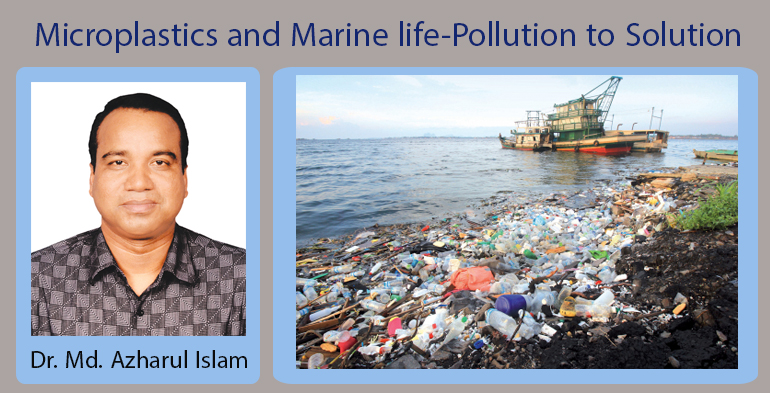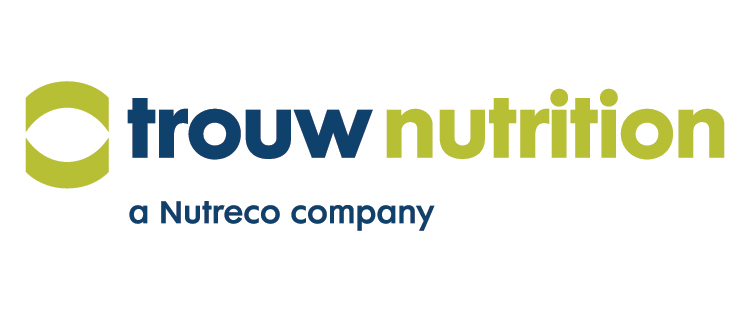
Dr. Md. Azharul Islam:Marine organisms are continuously exposed to litter and plastic pollution. The largest, most persistent fractions of marine litter are synthetic polymers and thermosets, collectively known as plastics account for at least 85% of total marine waste.
A couple of recent researches show that physical collisions with macro-sized plastics by marine mammals, fish, birds, reptiles and plants are a direct source of fatalities. It is difficult to determine and quantify the causal links between mortality and ingestion of large plastic fragments, but there are growing numbers of investigations to better understand the origin of the plastics and the causes of death. What is widely reported is the presence of plastic fragments in the guts and tissues of a wide range of marine species at all stages of their life cycle, including those directly vital to food provision such as fish and shellfish, either directly from the environment or via plastic-contaminated prey. Macro plastic debris has been found in the digestive system of aquatic organisms, including all marine turtle species sampled and nearly half of all surveyed seabird and marine mammal species.
Floating macro plastics remain a major concern in the conservation of sea turtles, as their visual feeding strategies mean that they select structures analogous to those of jellyfish, such as soft floating plastics. Their backward facing esophageal papillae also inhibit regurgitation and facilitate particle accumulation in the gut. Plastic bottle fragments, fishing lines and paint chips are commonly encountered in the guts of sea turtles. A recent research in Brazil found 70% of juvenile turtles ingested plastic. In the North Pacific Ocean and the Mediterranean Sea more than 80% of turtles were shown to have ingested some form of debris. In New Zealand 63% of endangered green turtles had ingested synthetic debris.
Non-lethal effects include lacerations from the particles as they translocate across the cell membrane into the circulatory, lymphatic, respiratory and/or other biological system, suffocation and starvation, physiological disturbances, changes in gene expression and alterations in behavior. Evidence of these effects has been documented for algae, zooplankton, and consumers such as fish, turtles, birds, whales and seals, although an absence of plastics in seal stomachs in the Arctic and Antarctic was also reported.
Effects of micro plastics in marine life
It has been recognized for more than a decade that micro plastics can transfer a range of toxic chemicals, metals and micro pollutants into open surface waters, where they can be ingested by a wide range of fauna. Over the past decade a broad range of laboratory and experimental studies have complemented field observations in the hope of achieving a better understanding of the effects of micro- and/or Nano plastics on different organisms (e.g. corals, birds, fish and mammals). However, monitoring micro plastics remains challenging both in the environment and under laboratory conditions. Plastic particles are often naturally or experimentally co-contaminated with diverse chemical pollutants. It has, therefore, been concluded that more innovative, robust and scientifically sound experiments in the field are needed. For example, the nets commonly used to collect micro plastics, and which have mesh sizes ranging from >500 μm to >200 μm, under sample micro plastics and lead to lower estimates compared to studies using finer mesh nets of 0.45 µm. Previous reports on the quantities of micro plastics in the marine environment are likely to have been underestimated and open to misinterpretation. Sample location is also important; for example, Ryan et al. (2019) collected microfibers in three ocean basins and found that fiber densities were 2.5 times greater at the sea surface than 5 meters subsurface. Properly estimating quantities of nano plastics presents an even greater challenge. Despite these difficulties, the body of literature looking at the effects of microplastics continues to increase. However, the effects of microplastics and the causal mechanisms of harm in marine biota are unevenly studied and there are many discrepancies among reports.
Physically, just as with macroplastics, microplastics may lacerate the gut or cause an animal to feel full, and there is evidence (albeit using very high doses) that very small ingested microplastics may cross the gut lining and accumulate in tissues where they can potentially have deleterious effects such as inflammation. Several effects appear to be exacerbated when organisms are exposed to plastics with sorbet contaminants. Variations in study findings are likely to be the consequence of different polymer types, associated chemicals, the study species, the doses used during testing, and the duration of the exposure. Under laboratory conditions, microplastics have been shown to cause a variety of biological effects in crustaceans, mollusk’s and Polychaeta’s, including changes in gene and protein expression, inflammation, disruption of feeding behavior, decreases in growth, decrease in reproductive success, changes in larval development, reduced filtration and respiration rates, and decreased survival. However, there are also studies in which no effects were detected. In addition, the review found that particles >500 nanometers [nm] in size were very unlikely to pass the blood-brain barrier and that instead the underlying mechanisms responsible for their neurotoxicity came from altered immune responses and metabolism, culminating in impaired brain functions and behavior.
Microplastics have been demonstrated to sorb persistent organic pollutants (POPs) such as polycyclic aromatic hydrocarbons (PAHs), polychlorinated biphenyls (PCBs) and dichloro-diphenyl-trichloroethane (DDT), as well as trace metals (e.g. copper or lead). This has been shown experimentally with virgin plastic pellets in seawater. Natural sediments and organic matter also have the capacity to adsorb hydrophobic organic chemicals. Although the mechanisms of accumulation and concentration of chemicals, and how chemicals adsorb and desorb to and from plastics, are well researched, these concepts are not typically included in tests of microplastics biological effects, where many factors other than ingestion, such as the hydrophobicity of the pollutant, type of polymer, age of the plastic, water, temperature, pressure, presence of biofouling on the plastic surface, and salinity, all matter. In the case of Nano plastics, large surface area could lead to higher concentrations of organic toxic chemicals or heavy metals being retained compared to microplastics, which could lead to the risk of gradients building up within an organism’s tissues. Primary or virgin microplastics may be considered harmful because of their potential to release chemicals into the environment. UNEP (2019) notes that current evidence suggests ingestion of microplastics does not significantly enhance exposure/bioaccumulation of organic pollutants (including POPs) compared to other types of particles present in the environment or other exposure pathways (e.g. water, diet) in general.
Writer:Professor & Head, Department of Environmental Science, Bangladesh Agricultural University, Mymensingh





















